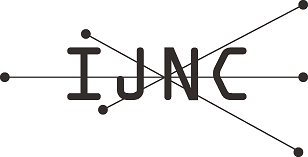Adjacent Interference of LoRa for Large-scale Livestock Monitoring
Abstract
Recently, ad hoc networks have been widely used because of the progress of the Internet of Things (IoT). A long-range wide-area network (LoRaWAN) is one of a number of low-cost wide-area networking technologies and has been drawing attention because of its outstanding performance in long-range low-power communication. LoRa is an implementation of LoRaWAN that is now used in many applications, including grazing management for livestock monitoring. LoRa uses carrier-sense multiple access with collision avoidance (CSMA/CA) to improve resilience against interference. However, in our personal experience implementing livestock-monitoring networks using LoRa, we have encountered performance degradation issues due to collisions among channels. In this paper, we first explain the problems that we encountered. Then, we explain the experiments undertaken herein to investigate these problems. Finally, we propose a solution and evaluate its effectiveness based on a simulation, which simulated real-world conditions. In the preliminary experiment, we used two transmitters to measure interference at different channel distances, bandwidths (BWs), and spreading factors (SFs) and found that a closer channel, smaller BW, and/or larger SF led to a higher carrier sense rate and greater interference distance. Thus, we proposed a cellular communication network for channel allocation to reduce adjacent-channel interference and a duration division mode to solve the insufficient channel issue. The calculations demonstrated that the proposed solution can monitor approximately 3,000 cows in a pasture with an area of 4x4 km^2.
Keywords
LoRa; carrier sense; adjacent-channel interference; channel allocation; cellular communication; livestock monitoring
Full Text:
PDFRefbacks
- There are currently no refbacks.
